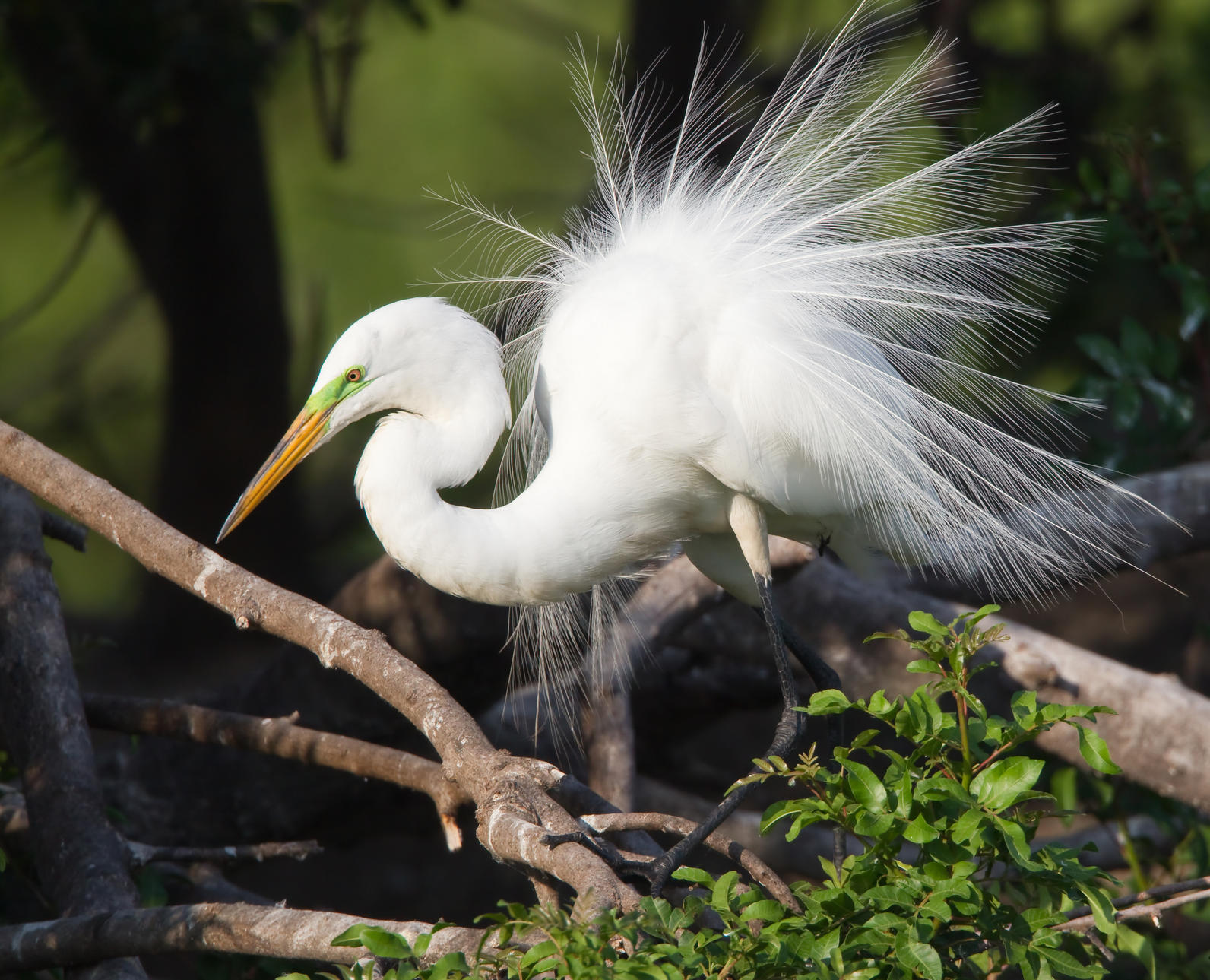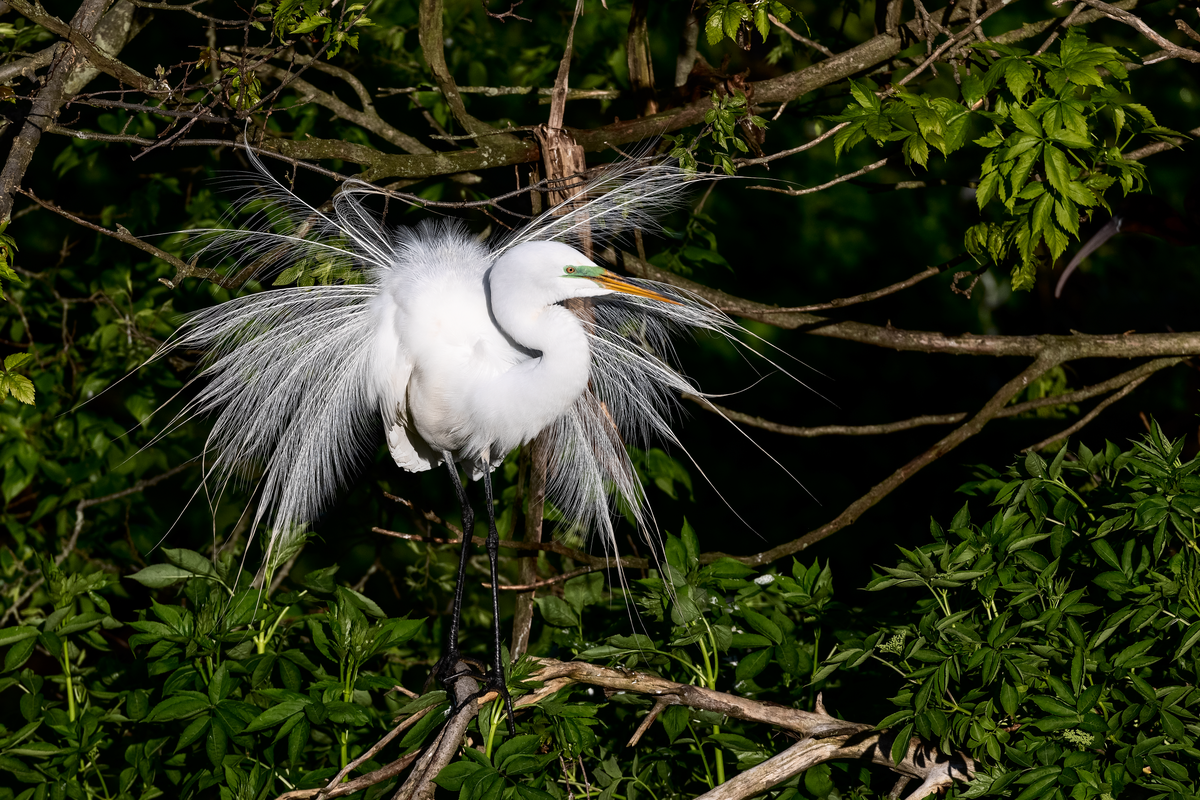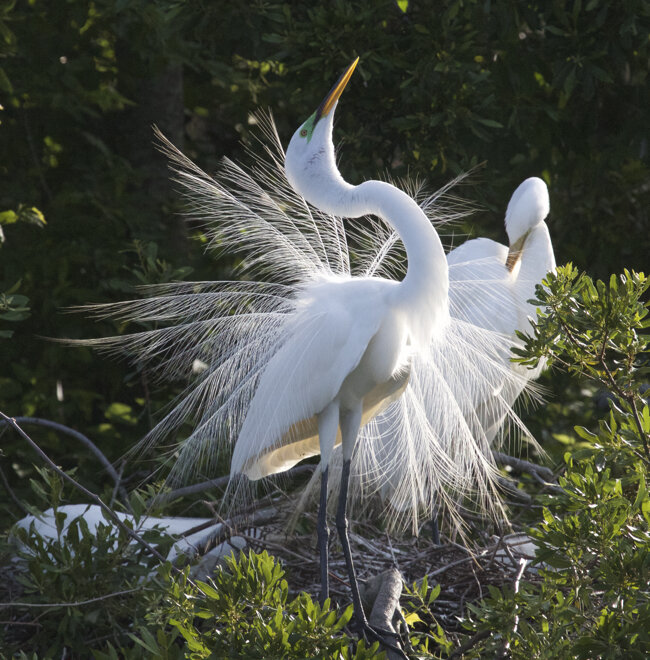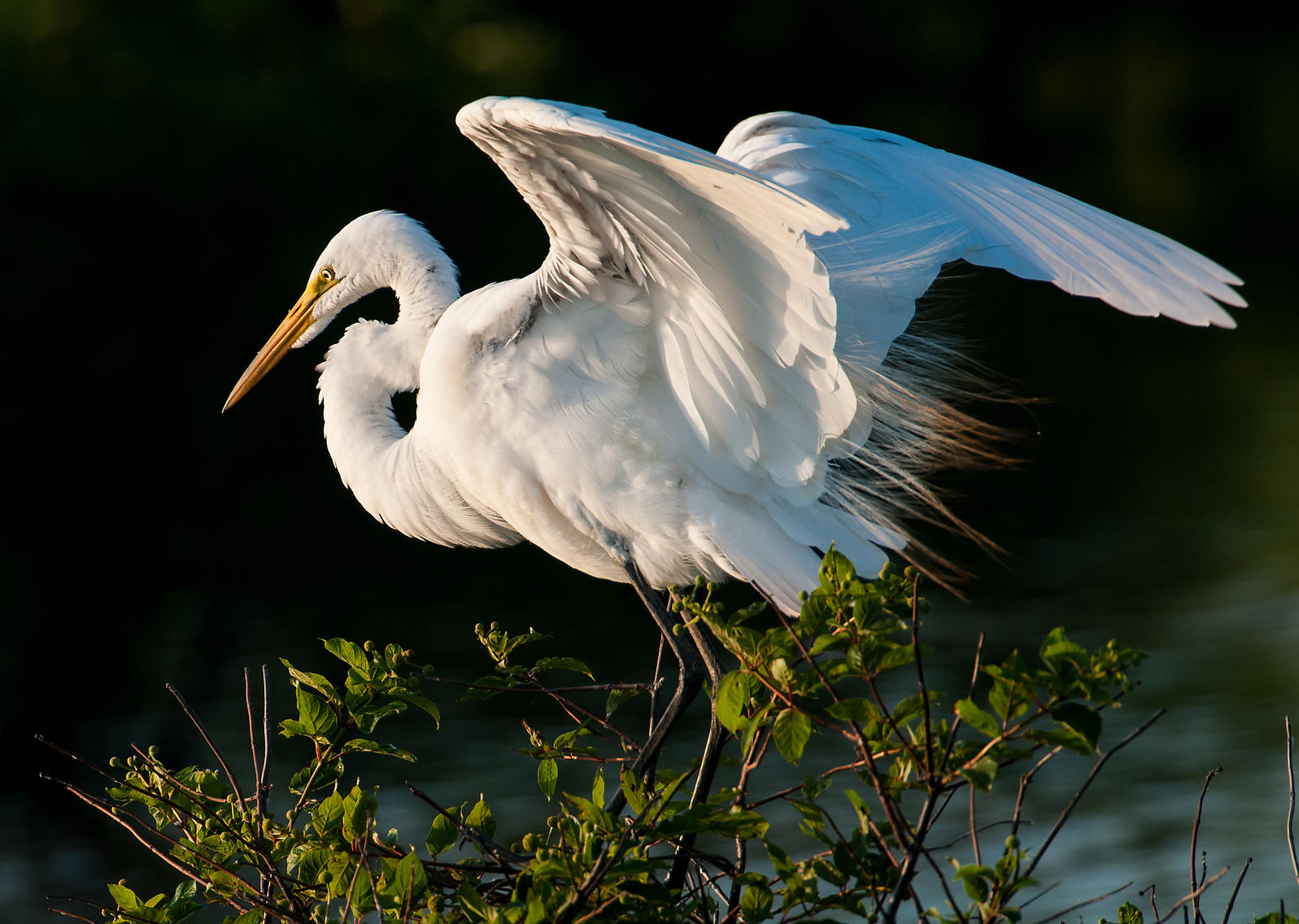The Great Egret, scientifically known as *Ardea alba*, is a large, majestic bird belonging to the heron family, Ardeidae. This species is found across the globe, including North and South America, Europe, Asia, Africa, and Australia.

The Great Egret has a slender, elegant body covered in pure white plumage. Its long bill is yellow or orange, and its legs are typically black or yellow, depending on the region and breeding season. These birds are quite large, measuring about 80-100 cm in length, with a wingspan of 1.3 to 1.7 meters.

Great Egrets are commonly found in freshwater or brackish environments such as ponds, lakes, marshes, and coastal areas. They prefer to hunt fish, frogs, and other small aquatic animals by standing still or moving slowly through the water, waiting for prey to come close. When a prey item is spotted, they swiftly strike with their sharp bill.

During the breeding season, Great Egrets build nests in tall trees near water sources. Their nests are constructed from twigs, grass, and other materials. The female typically lays 3-4 pale blue eggs. Both parents share the responsibility of incubating the eggs and feeding the chicks.

In many cultures, the Great Egret is a symbol of purity, loyalty, and patience. They are often depicted in art and literature, representing grace and elegance.

While the population of Great Egrets is relatively stable, they still face threats from habitat loss and water pollution. Protecting and preserving their natural habitats is crucial for ensuring the survival of this beautiful species in the future.

The Great Egret is not only an important part of the ecosystem but also a bird that inspires awe and admiration among nature lovers.
